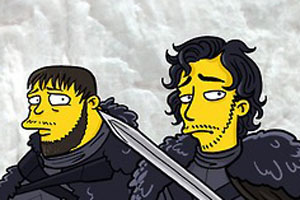
How many screens does it take to watch a reality television show
“It depends what’s got the most battery,” says broadcast personality Dom Harvey.
Today’s viewer is a multi-tasker, using social media platforms to simultaneously read, write and comment about what they’re watching. It’s called second-screen engagement – and no genre has tapped into it better than reality television.
This week, New Zealand’s biggest networks – TVNZ and MediaWorks – go head-to-head in the battle to dominate social media conversations with the return of DIY competition The Block NZ and the first local production of My Kitchen Rules.
Once, their success would be measured by ratings.
Today, the bean counters will also be noting “second-screen” involvement: Twitter, Instagram, and Facebook participation via mobile phones and tablets.
“It almost gives it that feeling of being at a sports game,” says Harvey, who admits to using both his mobile phone and iPad while watching television.
“Suddenly, you’ve got thousands of people who are all joining you in this activity. The only pitfall I’d say, is it’s hard to read what other people are writing, and write your own stuff as well. I’ll be scrolling through my feed and reading other people’s tweets and suddenly realise I’ve missed about three minutes of what’s happening on television. Then you’ve got to rewind and hopefully by the time the ad breaks are over, you will have caught up again.”
Consider the inconceivability of that statement 15 years ago: Words like “feeds” and “tweets”; the concept of rewinding live television and the bliss of skipping a commercial break.
“I’m a kid of the 80s,” says Harvey.
“I was raised in the era when there were just two TV channels and the next day, at school or work, everyone was talking about exactly the same TV shows. There were such limited options.”
The “second-screen” experience, where viewers post their thoughts online as the action happens, has been dubbed the new water cooler. Participants enjoy being part of a bigger conversation.
But it’s also, says Harvey, “partially an ego thing”.
“If you write something that gets favourited 50 times and 29 retweets, it certainly gives you a little bit of a buzz. Which is tragic, I know.”
Last year, MTV’s parent company Viacom International Media Networks determined that 70 per cent of its young viewers were interacting with other fans via a second screen while watching their favourite shows.
As one American commentator wrote: “The reality television world has started to strategically use social media for some of the heavy lifting to get ratings, which in the past had been placed solely upon the shoulders of some crazy woman or a guy who would eat live rats for $1000.
Ad Feedback
“The star characters of these reality shows are now continuously using social media to be in your face daily – if not hourly – with their drama.
“A strong social media presence now comes as a job requirement when you apply for reality stardom.”
How does that experience play out here In March 2011, Greymouth woman Jackie Thomas posted her first tweet: “Why the heck do I have a Twitter #notfamousenough.” Two years later, she won the first series of X Factor NZ. Her followers hit a healthy – for New Zealand, if not spectacular for a pop star – 10,000. (Neil Finn, by contrast, has 24,000; Kimbra has 144,000 and Lorde more than two million).
According to figures provided by TV3, when the series screened, up to 70,000 Facebook fans were actively talking about the show at any one time, and every episode trended on Twitter.
There were downsides. Harvey had to apologise for his tweet that referenced a child molestation storyline from the movie Once Were Warriors. When contestant Grace Ikenasio was eliminated, he wrote “Poor Gracie! First molested in her own bed by uncle bully [sic]. And now kicked out of #xfactornz.”
The problem, said Harvey this week, “is you’re in the privacy of your own home and often you’re writing and you’re posting these things without giving it too much thought”.